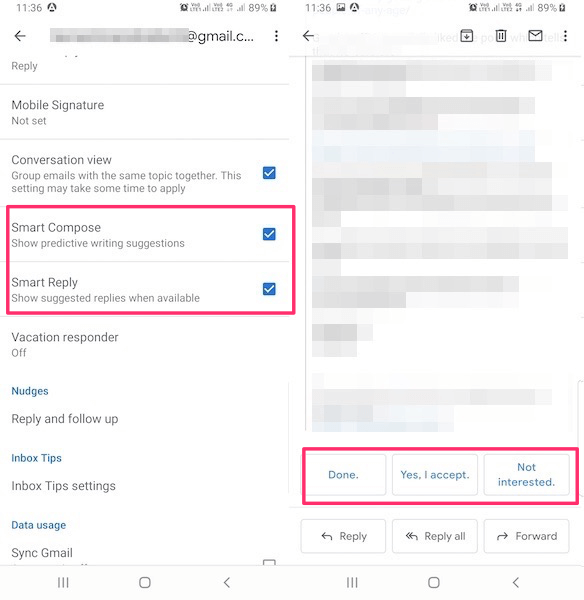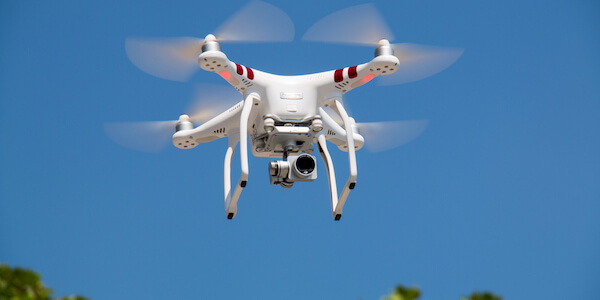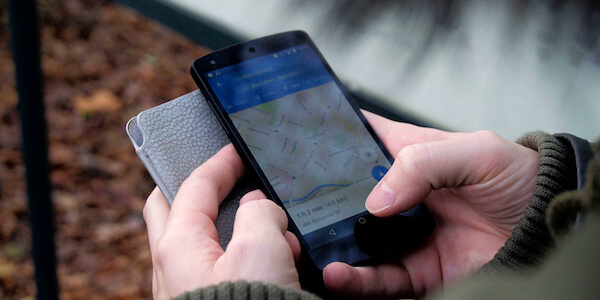While artificial intelligence seems like a complex concept, it is more common than we actually think. We experience various applications of artificial intelligence in our daily life without even realizing it. But what exactly artificial intelligence is and what part is it playing in our day to day life? Well, in terms of computer science it is sometimes defined as machine intelligence i.e. consciousness or intelligence that is displayed by the machines. Any device that is capable of recognizing its surroundings and performing a task with respect to information it perceived from the surrounding falls into AI.
Generally, many organizations claim their products run on artificial intelligence. When it just responds to pre-defined functions and information that is already provided to it. That is not necessarily AI because an actual AI can mimic what humans are capable of doing with their minds. Such as learning on its own and solving a complex problem. An actual AI is capable of becoming smarter with time by learning from repeated iterations. When we talk about artificial intelligence we are not talking about robots and androids that are often being portrayed in the movies. Yes, they do mimic human behavior and even emotions but we are not there yet, at least not in the real world scenario. Machine learning and AI are even used used in spectronomy. For now, machine learning was tested on UV vis spectroscopy machines for predicting optical and photophysical properties of organic compound
What we are talking about is voice or non-voice technologies that we interact with in our day to day life. Not only that it is also affecting our habits and lifestyle in a positive way. In this post, we are going to explain 15 examples of those AI technologies in detail.
15 Examples Of Artificial Intelligence
1. Smart Features of Gmail
Google has so many AI implementations in its mailing app. By the use of artificial intelligence, it determines whether or not the emails that you are receiving are spam or not. Due to its intelligent learning, it separates authentic emails from spam emails and prevents them from ending up in your inbox. Google claims that their AI enabled filtering process filters 99% of the spam emails and getting better with time.
The other filtering process that its AI performs is sorting your emails in three different categories. Namely primary, social and promotion. Primary folder contains all your personal and official emails, Social folder contains emails from your social platforms and promotion folder contains all the promotional emails from the websites you have signed for. This way your emails are always organized and can be accessed quickly.
Besides these, features like Smart Compose and Smart Reply makes you write and reply to Emails faster and easier than ever. Smart Compose predicts what you’re about to write and shows it to you before you write it while Smart Reply gives you quick suggestions for replying to an Email whenever possible.
2. Predictive Replies In Messengers
Predictive replies or smart replies in messengers like Skype, Allo and even Gmail is another effective example of AI. With the help of smart reply, the user can respond to certain messages and emails with small phrases like “Thank you” and “Sure, I’ll be there”.
These responses automatically pop on the chat screen after the AI reads and recognize the message that was sent to you. With just a click of a button, you can reply to someone’s message without even actually typing it.
The way smart replies work is it learns from your writing style and try to mimic it the next time you receive a similar message. Most of the time the suggestions are spot on and it does a really good job in predicting what you might respond. Like an actual human being, it reads the message and creates a response.
3. Chatbots Or Conversational AI
Lately, users of messaging apps like WhatsApp, Skype, and Facebook messengers have increased dramatically. It shows that people prefer communicating over text as it is convenient and allows users to multitask.
For example, a Chinese chatbot WeChat bot can go as far as setting medical appointments. It can also rent/book a taxi, send money online and many other tasks. There are also thousands of chatbots for Facebook Messenger, Slack, Skype, and Kik. Some of the benefits of chatbots are:
- It Improves customer service as the customers don’t have to wait in a queue due to a limited number of operators.
- With chatbots, one doesn’t have to answer the same question multiple times as chatbot recognize the repetitive question and replies in no time.
- Chatbot remembers customers preference and information and uses it the next time they start a new conversation.
4. Tesla
If you are not aware of cars by Tesla yet then you are missing out a lot. The AI-driven car by Tesla is a semi-automatic car that can ride itself without the need of a driver on the steering at all times. The feature is called autopilot which enables Tesla to steer, accelerate and apply brake automatically. It uses 8 surround cameras that provide 360 degrees of visibility around the car for up to 250 meters distance. It also has 12 ultrasonic sensors in addition to detecting cars and objects in its range.
The car also continuously update itself by over-the-air software updates. That implies if a car learns something, it gets shared across all the Tesla cars during updates making it smarter with every update. The best part of owning a Tesla is its safety features that other cars don’t offer.
Features like automatic emergency braking, front and side collision warning and Automatic high/low beam adjustment make it an ideal AI driven car. For now, it doesn’t have the fully self-driving capability as it requires driver’s supervision from time to time. But in the near future, we can expect a lot more AI features in the car that will replace the need of a dedicated driver.
5. Smart AI Drones
Artificial intelligence and drones go hand in hand. Combining AI technology with a UAV lets a person on the ground have a bird view in the sky. Not only that, companies like Amazon and Walmart have already started funding drone delivery technology. We can expect the program to get into full motion very soon as the military sector is successfully using the AI drone program.
Until recently, you have known drones to only display what is being captured by their camera. But due to the implementation of AI in the drones, it can now recognize its surroundings. It allows them to map ground distance, certain area and even track any kind of object on the ground. Information that it capture gets processed and reported back to the owner in real-time.
Currently, manufacturers are developing drone software for public safety and security only. Such as providing reports to police, firefighters and emergency teams. A Boston based company Neurala has enabled a drone to identify a person of interest from the crowd. The company claims that it scans the crowd based on the picture provided to it and identify the person in 20 minutes. Its applications are a lot but for now, it is being used in Africa to prevent elephant poaching as it spots the poacher from miles away.
Related: 7 Small Drones That You Can Buy Online
6. Video And Music Streaming Services
Whether you are listening to music on Spotify or watching movies on Netflix, AI is constantly working in the background and helping you make decisions. Even on YouTube, have you ever wondered how you ended up watching a recommended video without even subscribing to that particular channel?
YouTube and other streaming websites use AI in order to know your preference on the basis of likes and your history. AI learns from your liked videos and searches and recommends you videos that other users with the same preference watches. The same thing happens on Spotify and Netflix, the pre-created playlist and recommended shows always has the content you would like. AI is getting pretty good with knowing peoples taste and playing an important role in making services easier for them.
7. Video Games
Artificial Intelligence has been impacting video games for a long time now. The longest we can track it to is AI-powered chess game in the early ’90s that could learn from real players and even beat the expert ones. AI shapes the actions and behavior of NPC(Non-player characters). NPC is the character in the game that is not being controlled by a real player and often referred to as AI-powered bots. Instead of being controlled by an algorithm and pre-determined behavior, they actually learn from the game. They are simulated into games to play against real players and mimic what real players do.
For example, in first-person shooting games like PUBG Mobile and Fortnite. AI opponents are introduced in the start so that a new player can learn the game. They can listen to the player’s movement, look for their footsteps and shoot them. They also advance in time and take cover or go prone when a real player shoots at them. In racing games sometimes you compete with AI bots. They are able to race you and evolve by learning from you and elements in the game.
8. Online Advertising
Modern digital advertising would not have been possible without AI. With artificial intelligence working its way through every sector marketing and advertising sector is no surprise. The online advertising industry use AI to track our searches, preferences and browsing history to provide us ads based on that data. Without learning user’s preferences and determining their interest, digital advertising would just fail. It would display the random ads to random users which often gets ignored.
Programmatic advertising online also deals with AI as it has to conduct automatic buying and selling of advertisement. AI helps to determine the best time to present an ad to the user based on their usage. It also presents the probability of user engagement with the ad, if placed at any particular section of the page.
9. Image Recognition Or Image Search
The image search method of putting an image as reference rather than keywords in a search box in order to find out details about that or the images similar to it. The AI has an important part in it as it is constantly learning and identifying the products based on its image.
Image recognition technology has many applications, it is just not used in the Google lens to analyze a picture. They are highly beneficial as a marketing tool as well. For example, companies use it for the purpose to improve the shopping experience. Clothing companies like Target and Asos have integrated visual search tool on their app. It lets the user click a picture of a product or a clothing item and find similar things on their website. This method helps their customers to identify and shop a product that they were not aware of.
AI-based Image recognition is also proving to be an important tool in monitoring social media conversations. If someone owns a brand, they can find out what people are saying about their brand by looking for the pictures containing their logo in it. It’s a good way for the marketing department to gain insights and figure out new marketing techniques.
10. Proactive Detection On Facebook
This is probably the best example of artificial intelligence. There have been reports of suicide on Facebook live streams and early posts that showed suicidal thoughts. This all could have been prevented if someone could have reported it earlier. Facebook’s new proactive detection software actually save lives.
The way it works is its artificial intelligence technology scans posts and look for signs of suicidal tendency in users. And if there is any, it either contacts local emergency service or sends resources that would improve mental health to the person or their friends. Facebook can send help earlier by anticipating the trouble.
So instead of waiting for the report from the user’s side Facebook already sends the posts to moderators. The implementation of AI also helps in prioritizing profiles in terms of how urgent they need help. This way the more vulnerable users will receive help from the moderators first. Facebook conducts “wellness checks” with users to determine if they need attention.
11. Google’s Search Algorithm
The AI algorithm that Google uses to sort through the search result is RankBrain. RankBrain has two essential jobs, to understand search keywords and determine if people are satisfied with the results or not. Previously Google used to scan for the keywords in your query separately and look for pages that contain those keywords. But with AI enabled RankBrain, it understands what the user is asking for and provide an accurate result.
For example, if you search for “wearable by Sony” It will not only show you articles on the different types of wearables by Sony. But also suggest you keywords like Sony smartwatch or sony earbuds. It also learns from the previous users who came up with the same queries. Then it suggests you results on the basis of previous preferences. So it actually notices what result people want to see if they search a certain query, just like a human.
12. Product Recommendations On E-commerce Websites.
Have you ever fallen for “Customer who viewed this item also viewed” section on Amazon? The way they come up with that list is by using a recommender system tools. These tools rely on artificial intelligence by tracking the visitor’s activity and purchases. Due to this, they are able to predict what product the user is going to go for, after purchasing a certain product. So based on the interactions with previous customers it can suggest product recommendations to the current ones. Because of the AI implementations the recommendations are quick and up to the mark.
AI also plays a huge role in recommending products on the search field based on what you viewed earlier. You just have to type the first letter of the product and the recommendations will appear. According to statistics, 35% of Amazon’s revenue comes from recommended products, so it definitely works and is beneficial for customers. Recommended tools are also seen in action on other platforms such as YouTube, Instagram and Facebook search field.
13. Google Maps
Google Maps is going to introduce many artificial intelligence features in its app in the near future. But for now, it has already started using some kind of AI technology in its current form. The fact that is could suggest the best route to take based on the algorithm already shows progress.
The algorithm is nothing but the data and pieces of information calculated to form a final result. It finds traffic and construction and offers you the fastest route to your destination. There is one more thing that you have noticed when you use street view on Google Maps. They always censor the Faces and car license plates on the map. Essentially, machine learning or AI for censoring these things from the images as it is not feasible to do it manually. They are also going to use it to gather information from the posters and street signs.
14. AI In The Airline Industry
Airline Industry is a highly competitive industry and has implemented the applications of AI on their many stages. Technology such as facial recognition is used for passenger identification. Delta Air Lines has built a self-service counter that can verify a customer’s identity by matching their faces to their passport photo.
AI also handles tasks like baggage check-in and customer queries. United Airlines has partnered with Amazon’s voice assistant Alexa to help customers check in and get a real-time update of their flight.
There have been further plans to implement many other AI aspects to the aviation industry to save money and minimize flight delays. For example, Boeing is known for assisting a pilot through AI and the company is working towards manufacturing jetliners that can completely replace a pilot with AI.
15. Smart Home Devices
Most of the smart home devices that we use in our daily life is learning more about us and our preference. These devices use artificial intelligence to determine our habits and adjust their settings to our need. The examples of artificial intelligence are endless here and we are going to mention a few to give you an idea.
For example, Nest thermostat can adjust itself to the temperature that you prefer. When it doesn’t detect anyone in the home it automatically turns off and saves energy.
The smart doorbell only sends you a feed when it detects any motion in front of the house even before they ring the bell. Some of them have facial recognition technology that detects a face and let you set a name for that person. So the next time they come around it will automatically identify and notify whos’s at the door. It can also sync itself with the smart lock and let that person in without you going for the main door.
Philips Hue smart light can determine your preference and change its color and intensity depending upon the time of the day.
Conclusion
By looking at these artificial intelligence examples that are being used in everyday lives, it’s safe to say that the introduction of Artificial Intelligence has made a positive impact on our life. It has not only made things easier for us but also impacted our choices in some ways. It makes us wonder if there is anything that artificial intelligence couldn’t do. However, automated AI still needs people to design its algorithm so be assured that AI can never fully replace a human being.
With ongoing improvements and constant development in the AI field, there is more to come. Let us know in the comment section what you think about its impact on your daily life. More importantly, how it changed your perspective of life.





